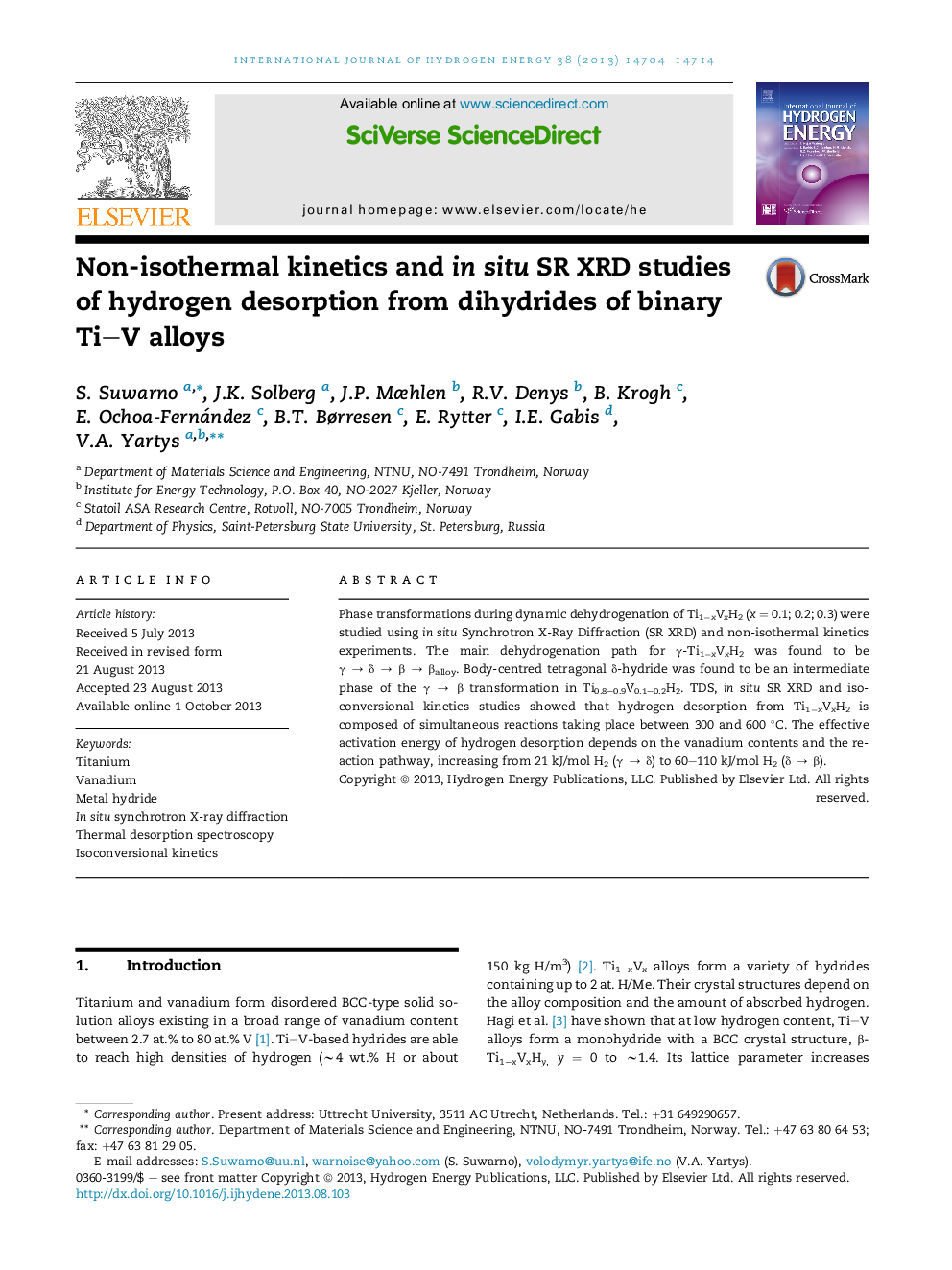| Article ID | Journal | Published Year | Pages | File Type |
|---|---|---|---|---|
| 7721287 | International Journal of Hydrogen Energy | 2013 | 11 Pages |
Abstract
Phase transformations during dynamic dehydrogenation of Ti1âxVxH2 (x = 0.1; 0.2; 0.3) were studied using in situ Synchrotron X-Ray Diffraction (SR XRD) and non-isothermal kinetics experiments. The main dehydrogenation path for γ-Ti1âxVxH2 was found to be γ â δ â β â βalloy. Body-centred tetragonal δ-hydride was found to be an intermediate phase of the γ â β transformation in Ti0.8-0.9V0.1-0.2H2. TDS, in situ SR XRD and isoconversional kinetics studies showed that hydrogen desorption from Ti1âxVxH2 is composed of simultaneous reactions taking place between 300 and 600 °C. The effective activation energy of hydrogen desorption depends on the vanadium contents and the reaction pathway, increasing from 21 kJ/mol H2 (γ â δ) to 60-110 kJ/mol H2 (δ â β).
Keywords
Related Topics
Physical Sciences and Engineering
Chemistry
Electrochemistry
Authors
S. Suwarno, J.K. Solberg, J.P. Mæhlen, R.V. Denys, B. Krogh, E. Ochoa-Fernández, B.T. Børresen, E. Rytter, I.E. Gabis, V.A. Yartys,
